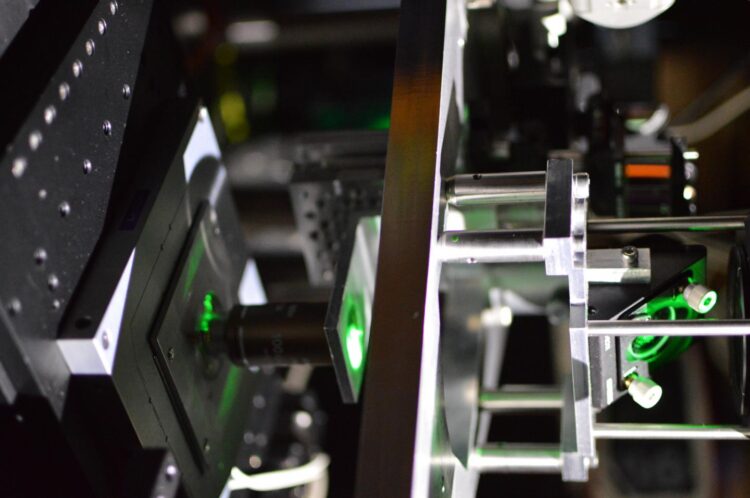In a major scientific leap, University of Queensland researchers have created a quantum microscope that can reveal biological structures that would otherwise be impossible to see.
This paves the way for applications in biotechnology, and could extend far beyond this into areas ranging from navigation to medical imaging.
The microscope is powered by the science of quantum entanglement, an effect Einstein described as “spooky interactions at a distance”.
Professor Warwick Bowen, from UQ’s Quantum Optics Lab and the ARC Centre of Excellence for Engineered Quantum Systems (EQUS), said it was the first entanglement-based sensor with performance beyond the best possible existing technology.
“This breakthrough will spark all sorts of new technologies – from better navigation systems to better MRI machines, you name it,” Professor Bowen said.
“Entanglement is thought to lie at the heart of a quantum revolution.
“We’ve finally demonstrated that sensors that use it can supersede existing, non-quantum technology.
“This is exciting – it’s the first proof of the paradigm-changing potential of entanglement for sensing.”
Australia’s Quantum Technologies Roadmap sees quantum sensors spurring a new wave of technological innovation in healthcare, engineering, transport and resources.
A major success of the team’s quantum microscope was its ability to catapult over a ‘hard barrier’ in traditional light-based microscopy.
UQ team researchers (counter-clockwise from bottom-left) Caxtere Casacio, Warwick Bowen, Lars Madsen and Waleed Muhammad aligning the quantum microscope.
“The best light microscopes use bright lasers that are billions of times brighter than the sun,” Professor Bowen said.
“Fragile biological systems like a human cell can only survive a short time in them and this is a major roadblock.
“The quantum entanglement in our microscope provides 35 per cent improved clarity without destroying the cell, allowing us to see minute biological structures that would otherwise be invisible.
“The benefits are obvious – from a better understanding of living systems, to improved diagnostic technologies.”
Professor Bowen said there were potentially boundless opportunities for quantum entanglement in technology.
“Entanglement is set to revolutionise computing, communication and sensing,” he said.
“Absolutely secure communication was demonstrated some decades ago as the first demonstration of absolute quantum advantage over conventional technologies.
“Computing faster than any possible conventional computer was demonstrated by Google two years ago, as the first demonstration of absolute advantage in computing.
“The last piece in the puzzle was sensing, and we’ve now closed that gap.
“This opens the door for some wide-ranging technological revolutions.”
###
The research was supported by the United States Air Force Office of Scientific Research and the Australian Research Council. It is published in Nature (DOI: 10.1038/s41586-021-03528-w).
Media Contact
Professor Warwick Bowen
[email protected]
Related Journal Article
http://dx.





